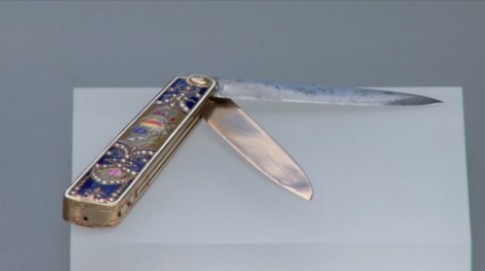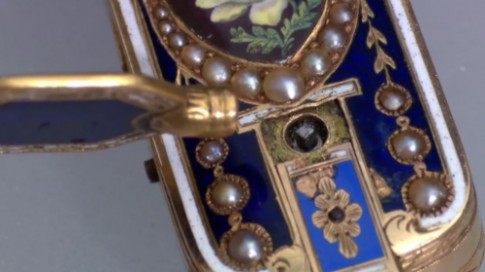iKnife Collector
The online community of knife collectors, A Knife Family Forged in Steel
BOX FULL OF KNIVES
Information
A place for our smaller groups to call home with their fellow collectors
A-Z index for the Box of Knives
Website: http://www.iknifecollector.com/group/odds-ends/page/alphatbetical-links-to-manufactures-in-the-box
Members: 175
Latest Activity: Oct 1
Home to more knives than are in your drawer
Quote of the Week:
"Try to be like the turtle - at ease in your own shell"
Bill Copeland
Discussion Forum
Camillus Knives
Started by Tobias Gibson. Last reply by George R Naugle Oct 1. 82 Replies 10 Likes
CFK / iPAK Knives - for all those who dare!
Started by Lars. Last reply by Kevin D Jul 19. 41 Replies 3 Likes
Robeson Knives
Started by Ken Spielvogel. Last reply by George R Naugle Jul 13. 72 Replies 4 Likes
Ulu Knives
Started by Lars. Last reply by Lars Jun 18. 24 Replies 2 Likes
New Kiridashi
Started by Kevin D. Last reply by dead_left_knife_guy Feb 11, 2024. 2 Replies 4 Likes
Knife Girl
Comment Wall
Add a Comment
-
Comment by Cory Craig on July 3, 2016 at 10:53
-
Comment by Jan Carter on January 19, 2016 at 19:33
-
A knife sparked another uproar in the UK, but this time it was for the better. On last night’s BBC hit TV series ‘Antiques Roadshow’, a man presented a 2 bladed slipjoint with a never before seen feature. Viewers across the pond were so amazed, the segment set Twitter off its trolley.

Swiss knife circa 1815
Like on PBS in America; the audience for the British version of Antiques Roadshow tune in to see rare treasures from the past, usually paintings or furniture that antique experts put a value on. The drama is heightened when the owner’s expectations don’t sync up with the expert’s appraisal.
The knife that turned up on last nights episode is believed to have been made in Switzerland and featured hand-enamelled scales inlaid with pearls. The adornments were impressive, but what really stunned experts was a never before seen feature: a tiny wind up music player hidden within the rear bolster of the knife.

Wind up mechanism hidden in rear bolster
The key, necessary to wind up the music mechanism was broken leaving viewers wondering what song the knife contained. It couldn’t have been Bryan Adams’ 1983 hit ‘Cuts Like a Knife’ because according to the celebrity antique expert the knife was produced by an unknown maker about 170 years earlier.
Just after the turn of the 18th century; the Swiss invented a flat disk inset with pins that made small musical trinkets with a much longer playing time possible, according to Iowa State University historians.
The antiques expert said the knife is unlikely to end up in the hands of a knife collector because “The Russian market is strong in terms of buying this unusual mechanical musical instruments [or] objects.”
But if you have the means and want to add this one of a kind custom to your collection, this musical blade could fetch in the range of USD $100,000 and $120,000 at auction.
-
Comment by Ron Cooper on December 22, 2015 at 16:07
-
I say congratulations and kudos to Mr. Trevino!
I'm sure he'll receive a nice bonus in his Cutco Christmas stocking!
-
Comment by Jan Carter on December 22, 2015 at 15:46
-
announced today
Gonzalo Trevino Becomes First Person in Cutco Cutlery's 65-Year History to Record $1 million in Sales.
On Dec. 14, San Antonio resident Gonzalo Trevino became the first sales representative in the company's 65-year history to sell $1 million of Cutco Cutlery in a single year. Trevino is a sales representative for Vector Marketing, the sales arm of Cutco.
-
Comment by Jon Salmon on December 3, 2015 at 12:47
-
I really enjoyed Steve Hanner's review of his CRKT Kit Carson M4, however, I think their might be some confusion about the CRKT "Lawks" system.
The "Lawks" or "Auto-Lawks" system from CRKT is for the purpose of preventing the blade from CLOSING, not keeping the blade from "opening". When the "Lawks" lever is pushed forward, it prevents the liner lock or frame lock from moving, hence reinforcing the safety of using the knife without danger of the blade closing accidentally during use. CRKT's "Fire Safe" mechanism is their feature for preventing accidental opening of the blade if the knife is also equipped with their "Outburst" speed assisted opening system. The "Fire Safe" feature (optional - not available on all "Outburst" assisted models) incorporates a "button-style" thumb stud on the blade which must be depressed by the thumb, and held down while moving the blade to the 30 degree position where the "Outburst" assist takes over and snaps the blade open. It takes a bit of practice, but once mastered, this is the safest auto / assist knife configuration I have found. BTW, I also have the CRKT Carson M4, and it is an excellent knife - and a real beauty with the burl wood handle scales. Thanks again to Steve for the review.
-
Comment by J.J. Smith III on December 3, 2015 at 9:23
-
Columbia River done good on this one.
-
Comment by Jan Carter on December 2, 2015 at 20:17
-
A review of this knife by our own Steve Hanner !
-
Comment by Howard P Reynolds on August 15, 2015 at 21:21
-
Thank you for the history, Jan. And thanks to Shlomo and Clint. A bit of a shame that I used my Solingen made Puma Prince in Stag, Puma Rudemann in Stag, and Puma straight razor. If they were NIB, I might get a handsome price for them.
-
Comment by Jan Carter on August 15, 2015 at 20:09
-
Company History
Timeline
1769 - Johann Wilhelm Lauterjung registers his PUMA® trademark with the Knifemaker’s Guild in Solingen and starts PUMA® in a small shop on the Wupper river.
1855 – Nathaniel, Johann’s great grandson, moves PUMA® to Solingen.
1876 Nathaniel’s son Otto Lauterjung (1855-1931) introduces pocket knives, stilettos, sabers, and hunting knives.
1900 – PUMA®-WERK Lauterjung und Sohn” is written down on the Solingen register of companies.
1920 – Otto’s sons Eugen (1883-1969) and Franz (18888-1976) build a second plant in Solingen and develop the export market. PUMA® becomes famous on the international market.
1936-1945 – PUMA® production is put under the authority of the War Production board
1945 – Return to civilian production of pocket and household knives
1953 – Oswald von Frankenberg and Ludwigsdorf (1915-1986), the husband of Renate Lauterjung, increases the company’s focus on hunting , fishing, and outdoor knives. While working with the famous German forester Walter Frevert, numerous PUMA® classics such as the Waidbesteck, Jagdnicker, Waidmesser, and Saufeder (hog spear) are developed. The famous bloodhound hunter Tassius designs the Rudemann and the Wildtoter.
1956 – The White Hunter knife is developed in conjuction with the East African Professional Hunter’s Association.
1957 – Kurt Gutmann of Gutmann Cutlery Company in New York becomes the U.S. distributor.
1964 – Military Series introduced.
1965 – PUMA® incorporates date codes on its knives that indicate when each knife was made.
1967 – Renate von Frankenberg becomes the General Manager of PUMA®-Werk1969 – Much of the PUMA® factory is destroyed by fire. Many old records and tools are lost.
1986 – Oswald von Frankenberg and Ludwigsdorf dies, leaving a healthy and growing company behind.1991 – PUMA®-Werk is sold to the Hindrichs family of Solingen.
1995 – Harald Lauer becomes Managing Director of PUMA®-Werk. Harald has been instrumental in PUMA®’s growth since the late 1970s and introduces new production methods including CNC controllers and laser technology.
1998 PUMA®-Werk is sold to Heiner Hiepass-Aryus and moved to the modern Solingen industrial park “Aufderhohe”.
2009 – PUMA® Knife Company U.S.A. of Lenexa Kansas becomes the North American distributor of PUMA®.
2010 – SGB™ German Blade line of knives is introduced.That is as far as the history on their site goes Howard. To the best of my knowledge all the SGB's are the china made?
-
Comment by Shlomo ben Maved on August 15, 2015 at 10:52
-
I knew of these knives back in 2010 or so and they had been getting atrocious reviews for their quality and the reviews haven't improved much since.
Puma still makes knives in Solingen (and are marked as such) but they are about five times more expensive.
© 2025 Created by Jan Carter.
Powered by
![]()
You need to be a member of BOX FULL OF KNIVES to add comments!